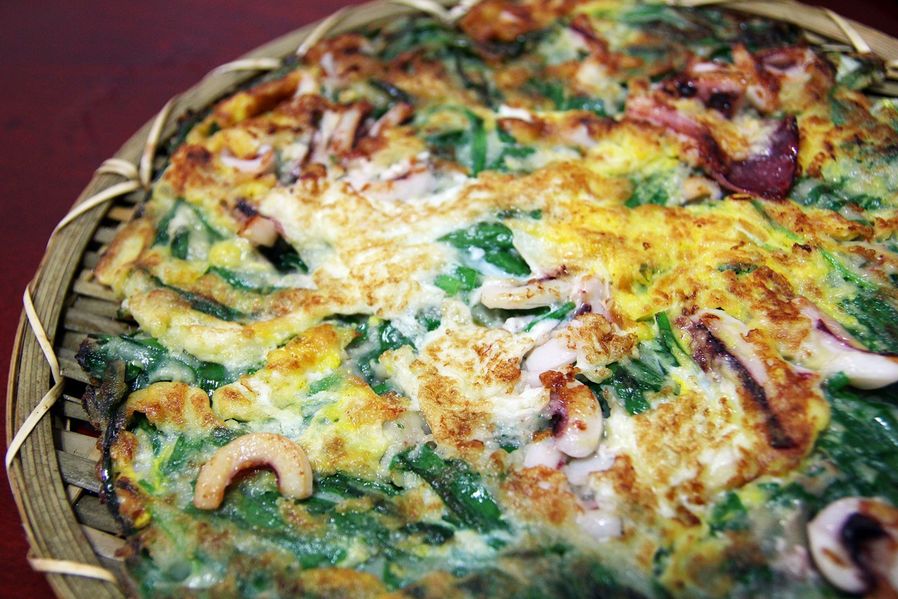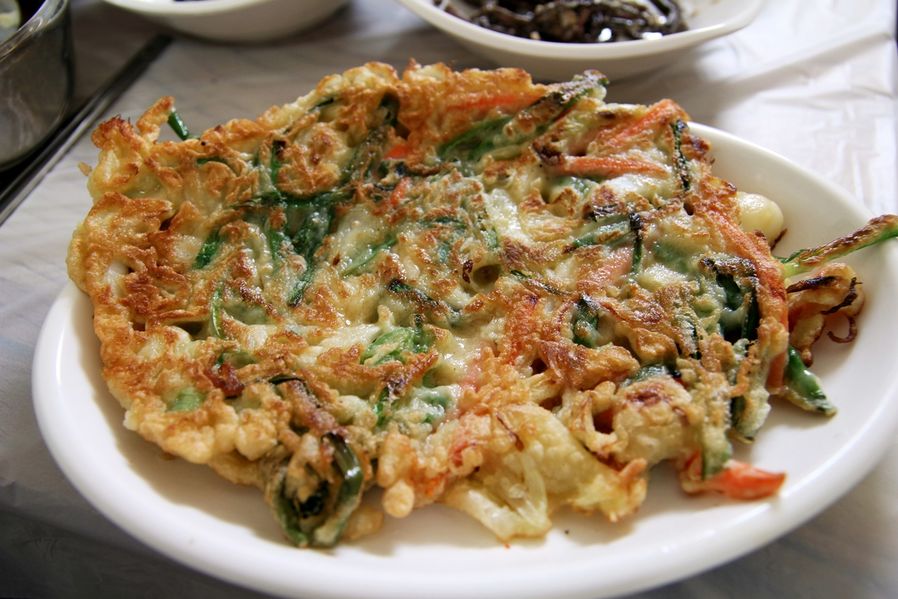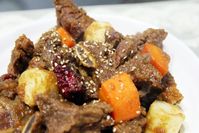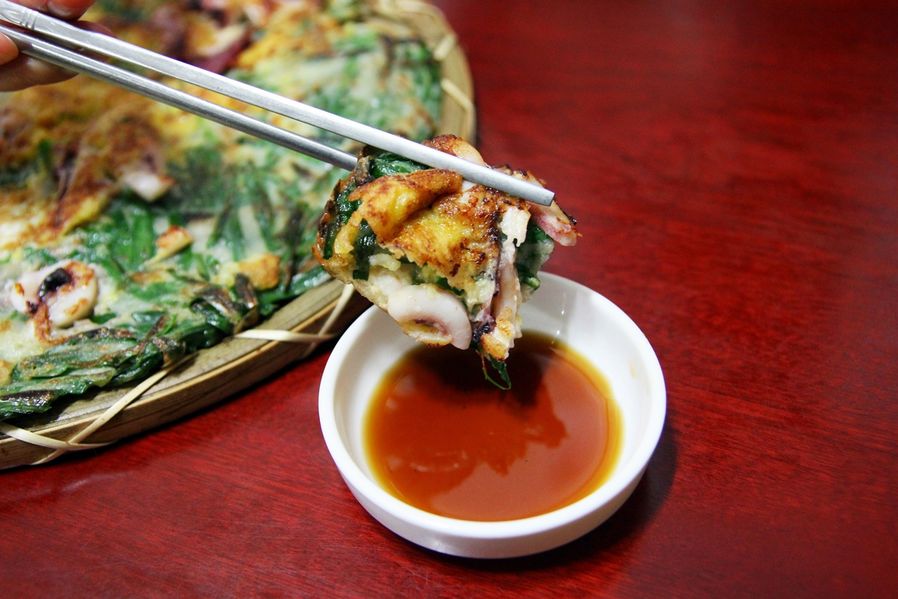1. Ingredients for Haemul-pajeon (stir-fried seafood pancake)
-Primary ingredients: Spring onion (thin onion like chive or small green onion)
-Secondary ingredients: Grain (wheat, sweet rice and rice) and seafood
(shrimp, squid and clam)
2. Taste evaluation
-Spicy:☆☆☆☆☆
-Salty:☆☆☆☆☆
-Sweet:☆☆☆☆☆
-Sour:☆☆☆☆☆
-Toasted flavor: ★★★☆☆
3.
Introduction to Pajeon(green onion pancake)
There’s
something called Jeon(Buchimgae) among Korean traditional foods. It
is basically pan-fried grain batter mixed with various ingredients
like meat, seafood or vegetables.
And
among many, the most popular one is called Pajeon. Pajeon is
pan-fried grain batter mixed with green onions. I decided to
introduce this recipe because it’s been increasingly popular among
foreigners visiting Korea since it is similar to pancakes or pizza in
the West.
There’s
no official record of its history but only a story that’s been
passed on from mouth to mouth.
In
1592, Korean people did everything they could to protect Dongnae
Fortress from Japanese invasion but they failed.
As
a final resort, they sliced spring onions and threw them to Japanese
army to make them blind temporarily. They expected some chemical
effects that you see today but Dongnae Fortress fell to the enemy and
many Koreans were killed during that time.
In
order to commemorate the memory of the deceased, Dongnae Magistrate
made this cuisine to serve the King and that’s how it was known to
the public.
Since
the late Joseong Dynasty era, it’s been spread throughout the
country starting from Dongnae Market.
So
you can find Pajeon Street with restaurants selling Pajeon famous in
the whole country.

Pajeon
is made of expensive ingredients.
Make
watery grain batter made of wheat, sweet rice and rice, put some thin
chives on a fan, cover it with batter, add shrimp, clam and squid on
it and pan-fried altogether until it turns yellowish.
And
it’s almost cooked, add eggs.
It
smells and tastes like fried green onion and toasted egg, and you’ll
find seafood very chewy.
It’s
not spicy or garlicky like any other Korean foods but everybody would
love it because you can taste the original ingredients used.
Especially,
it looks like a pizza or pancake that even foreign tourists can
easily enjoy.
The
most popular one is called Haemul-pajeon(seafood green onion pancake)
in Hoegi-dong in Seoul, and you can also see Pajeon Street in
Dongnae-dong in Busan or Insa-dong in Seoul or any other big
downtowns.
Search on Wikipedia
4.
Kinds of Pajeon
Pajeon
is tender young green onion or seafood mixed with flour batter and
pan-fried in oil but there are a few kinds of Pajon depending on each
region.
-
Regular Pajeon: Flour batter mixed with young green onion and seafood
-
Dongnae-pajeon: Sweet rice and rice batter mixed with special liquid,
young green onion and seafood. Originated in Dongnae area, Busan
-
Nokdu-pajeon: Mung bean batter mixed with young green onion and beef
(or pork). Originated in Gyeonggi-do area

Canon EOS 550D | f/4.0 | iso 200 | 2012:06:02 12:37:24 | Flash did not fire, compulsory flash mode | 19mm
5.
How to enjoy Pajeon even more
Pajeon
uses no other seasoning except for a bit of salt so you can basically
enjoy the taste of original ingredients.
But
it’s quite greasy since it’s pan-fried in oil. So it tastes a lot
better when you dip it in sauce like soy sauce.
Soy
sauce has a deeper flavor than salt because it’s basically
fermented beans.
When
you mix soy sauce with vinegar, spicy chili powder, onion and perilla
seeds, it tastes so better than salt.
Plus,
Pajeon goes well with Korean traditional drink, Makgeolli.
Pajeon
is quite expensive and fine-quality food in Korea but merely one dish
of Pajeon is enough to finish a few bottles of Makgeolli so it’s
quite economic. You will find it friendly and folksy to see people
sitting at the table with one dish of Pajeon in the middle and
drinking Makgeolli.
You
would make a great memory to drink Makgeolli with Pajeon at the bar
in Sinsa-dong and experience Korean night culture.











